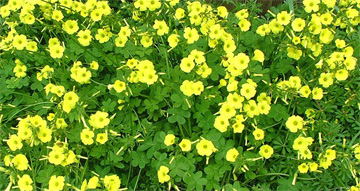 |
| Moenkopi Hopi Wash and Lower Village, my home for two years. |
For you to have an accurate
picture of what this project feels like from the inside, I need to include my
experiences of living powered down and more self-reliantly.
I
spent two years living in a Hopi village that had no running water, no sewers,
and no electricity. The old Mennonite mission buildings where we were housed
had electricity and slowly running water, siphoned from the spring at the edge
of the lower village and then stored in a water tank above the mission. (I used
to say we had walking, not running, water.)
Heat was by woodstove. For my two years there, I split most of the wood,
often with an old coughing chainsaw, but frequently by hand.
Living
at the mission meant constant work on its systems, such as the roof, our water
supply, our septic system and finishing out enough of the stone barn to house a
thrift shop downstairs, and me upstairs. All the work was DIY, although
sometimes a retired contractor and his sons came to work on our buildings as
their way of supporting the unit. Until a brave entrepreneur built a mini-strip
mall two miles away in Tuba City, the nearest useful hardware store was in
Flagstaff. Flag was an hour-and-a-half drive when there were no sandstorms,
thunderstorms, or blizzards. So if something was broken at the mission, we
usually had to find a way to fix it with what was on hand.
Some
people who came to the mission found this mode of living too challenging. But I
loved it. I had no romantic visions of pioneer or rural life; I happen to
relish the kind of mental and physical engagement this way of life requires.
For
example, the mission was built into the rocky slope of the wash, and it was
held in place by a series of terraces with high stone walls. We used to let
lower village families garden in the terraces to help them grow extra food. But
one night a village man went off drinking instead of turning off the crude
irrigation system we had rigged for the gardens. We didn’t notice it running,
because it was in the first terrace above the mission. But we certainly noticed
a few nights later when fifty feet of stone retaining wall collapsed , just
missing the main mission building.
 |
| Me, left, and an occasional helping hand. |
I
spent weeks rebuilding that wall using mud and the mound of rocks now
conveniently close at hand. At first it was overwhelming—so many tumbled rocks,
so much sandy earth spilling down from the terrace, and after one day of help
from a friend, just me and a shovel and a wheelbarrow. And this on top of my
regular daily work, too.
Figuring
out the most efficient process of rebuilding the wall started out as
self-defense, but I came to really enjoy the problem solving challenge; how
much water with how much earth makes the strongest mortar? The rocks that used
to be at the base of the wall are now covered by all the higher rocks that fell
onto them—how can I get at and use the heavy bottom rocks without moving every
rock twice?
Living
this way was certainly harder than using a contractor, or buying a pre-made
solution. And there were many times when my reaction was more like, “Oh God, now
what?” And I do remember the feeling of never being able to get ahead of
anything. Because there was always something newly urgent that needed doing
NOW, on top of my official job of running a daily rec center and rec program
for the village kids, my unofficial jobs of co-hosting visiting travelers,
grant writing, and helping run the weekly church activities.
But
the truth is, I felt more alive. I’d spent my previous life in school, reading and writing and studying, and
playing music and working in commercial kitchens. So it was alternately
daunting and exhilarating to have so much of my life now be in my own hands—if
I could come up with a solution to a challenge with our buildings or with my
work with the kids, I could just do it. And if I couldn’t, I’d better keep
trying because there was usually no backup.
I’ve
included as much self-reliance and simpler living as I could in my later life,
from working on the houses I’ve owned—carpentry, roofing, electrical, and
plumbing—to putting in gardens and even (God-forbid) gardening.
Now, I don’t particularly want to have to split
logs again, or build a fire an hour before I want the room to be warm.
But
I do very much want to live more simply and robustly, so that I can directly
engage whatever I need and make it work. This gives me a deep, deep
satisfaction that I have never forgotten.
 So my work as ZOdwellings has grown to include advising cities and Bay Area agencies about collaborative living policy, and advocating for broader definitons of the "family household" for down payment assistance programs.
So my work as ZOdwellings has grown to include advising cities and Bay Area agencies about collaborative living policy, and advocating for broader definitons of the "family household" for down payment assistance programs.




























